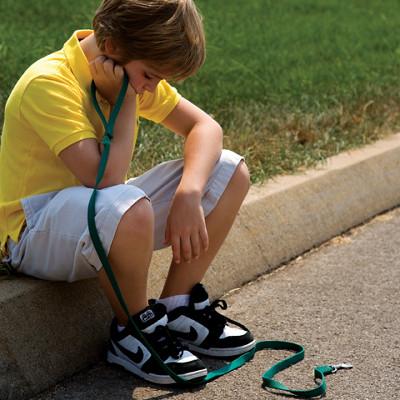 We helped you get your dog ready for vacation and even told you what you should bring, but what do you do if something terrible happens while you are away? Millions of companion pets go missing each year. Whether he runs off or is taken losing a pet is a frightening experience. Even if you are going to a place you and your dog are familiar with you should still prepare yourself just in case something happens to your pet.
We helped you get your dog ready for vacation and even told you what you should bring, but what do you do if something terrible happens while you are away? Millions of companion pets go missing each year. Whether he runs off or is taken losing a pet is a frightening experience. Even if you are going to a place you and your dog are familiar with you should still prepare yourself just in case something happens to your pet.
Take a deep breath and begin your search
The moment you realize your dog is gone is going to be terrifying. You may freeze up and even panic. The best thing you can do in this moment is to close your eyes and take a nice deep breath. Take a moment to calm yourself down and then spring into action. If you are staying in a hotel, you need to notify the staff immediately.
They know the ins and outs of the hotel and may be able to locate spots where you dog may be hiding. They can also question other guests about seeing a dog and look through surveillance cameras to figure out what door your pet may have left out of. If you are staying out in the woods or you lose your dog on the beach, make sure you tell everyone around you.
They may have seen a dog wandering around and can point you in the right direction. While you are notifying the people around you, send your family out to start looking. Simply going out and calling his name might work. If you have to drive around to look for your dog, make sure you drive slowly and turn the car off often to stop and listen for a response.
Call in the professionals
It may seem like you are doing a million things at once, but you need to notify Animal Control and local vets about your dog. While people are more likely to call Animal Control if they see your pal wandering around, there is still a chance that someone may bring your dog to a vet.
Make contacts
 If you have access to a computer and printer make about a hundred note cards and flyers with your dog’s picture and your contact information on them. Create a list of shelters, rescues, vets, other animal-related businesses and areas close to you where your dog may run off to. Hand out the note cards to people that work in these places and start posting your flyers. Ask locals if there are any dog parks or places where a dog may run off to in the area and add those to your list as well.
If you have access to a computer and printer make about a hundred note cards and flyers with your dog’s picture and your contact information on them. Create a list of shelters, rescues, vets, other animal-related businesses and areas close to you where your dog may run off to. Hand out the note cards to people that work in these places and start posting your flyers. Ask locals if there are any dog parks or places where a dog may run off to in the area and add those to your list as well.
Getting out into the public is one of the best ways to find your pal. Creating awareness as soon as possible may help identify him quickly. Flyers should be simple at first. Write “Lost Pet” in big bold letters with your dog’s photo, his name and your contact info. You can include a brief description, but don’t add information the general public may not understand. People that spot your dog may not know that difference between a Yellow Lab and a Golden Retriever.
By keeping it simple, people will be able to remember what your dog is supposed to look like. You can offer a reward, but do not say how much. While many people are kindhearted and want to help you find your lost dog, others are looking for an easy way to make some fast cash. If someone calls and says he has your dog make sure you ask for a detailed description.
Since you kept the description on your ‘Lost Dog’ poster simple, you can ask about more distinguishable features that your dog may have. When asking questions, keep in mind that your dog may look different once he is found. Your dog may have lost weight or gotten scratches or other marks while out on the street. Don’t get discouraged if the description is a little bit off. Plus, in the high tech world we live in it may be very easy to get the person that found your dog to take a photo of him and send it to you.
Visit shelters as often as possible
 If you still haven’t found your pet, the most important place to keep looking is shelters. While calling everyday may help, going down and physically looking for your pet may help find him faster. The descriptions you give many not necessarily match what they are seeing. If your dog has been roaming in unknown territory for a few days he will have lost weight and may have even turned a but grayish. Also, don’t assume that a shelter will find your pet for you.
If you still haven’t found your pet, the most important place to keep looking is shelters. While calling everyday may help, going down and physically looking for your pet may help find him faster. The descriptions you give many not necessarily match what they are seeing. If your dog has been roaming in unknown territory for a few days he will have lost weight and may have even turned a but grayish. Also, don’t assume that a shelter will find your pet for you.
Shelter workers probably see twenty five different black dogs with white spots a day, so it will be very hard for them to identify your pet. If you have family members that live close to the shelters in the city you lost your dog in, have them visit a few times a week. You will obviously have to go home at some point, so they can act as a lookout for your while you are at home. If you do not have any connections to the city, keep calling. Even though being there in person will help ID your pal faster, calling is still better than no contact at all.
Get online
 There are many websites out there for people that have lost pets and for people who have found pets. Keep an eye on sites like Petfinder.com, Pets911 and The Center for Lost Pets. Respond to posts that look like your dog and ask for a more detailed description. Be careful that you don’t get your hopes up too soon. Many pets are added everyday and just because one somewhat resembles your pet doesn’t necessarily mean that it is yours.
There are many websites out there for people that have lost pets and for people who have found pets. Keep an eye on sites like Petfinder.com, Pets911 and The Center for Lost Pets. Respond to posts that look like your dog and ask for a more detailed description. Be careful that you don’t get your hopes up too soon. Many pets are added everyday and just because one somewhat resembles your pet doesn’t necessarily mean that it is yours.
Don’t give up hope
Even if it has been months since you’ve heard anything about your pet, don’t give up. There are tons of stories out there about families finding their pet after months, even years of being missing.






